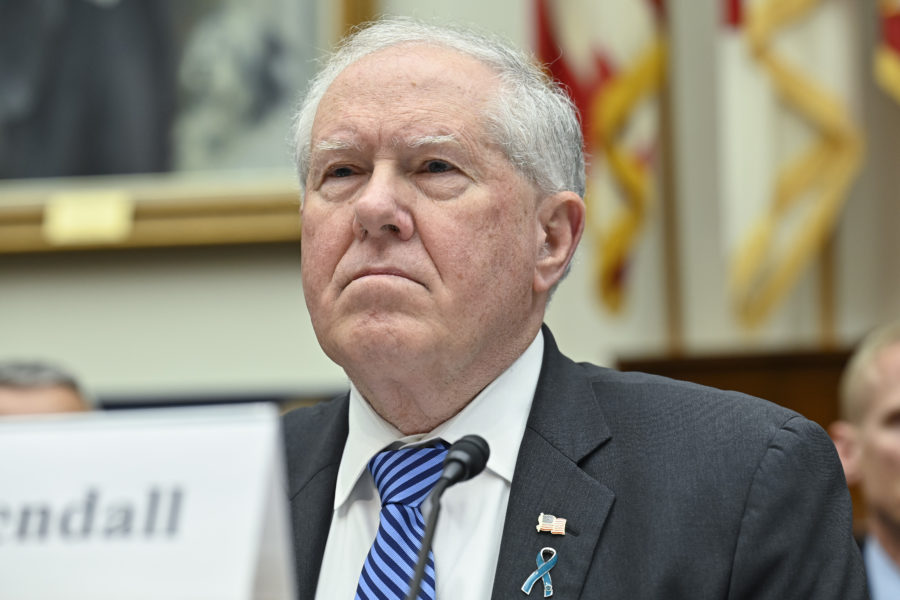Air Force Secretary Frank Kendall insists the service needs to modernize rapidly to face the threat of China. But modernization does not just mean fielding new aircraft, Kendall and other service leaders argue—the Air Force also needs to retire its aging airplanes.
“The truth is the Air Force needs things like electric warfare, battle management, intelligence, cyber capabilities, all of these things,” Kendall said at the Ash Carter Exchange defense conference May 9. “It doesn’t just need airplanes.”
“As the character of warfare changes,” Kendall added, the Air Force will become just as much about those new systems as “traditional platforms.”
“We’re having to divest some of those to free up resources to move forward,” Kendall said. “There’s been resistance to that in the past.”
That means the service—and lawmakers—have to make hard choices, Kendall said, while acknowledging there are also political realities that come into play.
“I know it’s hard, locally, in particular, to divest aircraft,” Kendall said.
The Air Force needs to acknowledge that lawmakers do not want jobs and resources taken away from their constituents, and try to ensure it brings “similar value to the local communities” as it modernizes, Kendall said.
The service has made progress on that front recently. After years of Congress saying “No” to the Air Force’s attempts to divest some of its aging fleet, the legislature has started to relent some, going along with the service’s requests to retire platforms like the A-10 “Warthog” and E-3 AWACS.
In fiscal 2024, the Air Force plans to retire 310 aircraft, including even more A-10s and E-3s, as well as 32 older F-22s. The F-22s in particular are aircraft the Air Force unsuccessfully tried to retire last year, facing pushback on and off Capitol Hill. But Kendall said the A-10s and E-3s were “increasingly obsolete and very difficult to maintain” and the early F-22s “are not fully combat capable.”
If it can, Kendall said, the Air Force wants to replace retired aircraft with similar systems, such as replacing an aging fighter unit with new fighter aircraft. If not, Kendall said the Air Force wants to convince lawmakers that a new unit is something with “longevity.”
For example, as the service gets rid of A-10s at Davis-Monthan Air Force Base, Ariz., it plans to stand up a new “Power Projection Wing.”
This year, Kendall sounded optimistic that the service’s reasoning and messaging is getting through.
“I’m going to express my appreciation to the Congress,” he said.
For now, the Department of the Air Force has wrapped up the unveiling of its fiscal 2024 budget to Congress, including advocating for aircraft divestitures. After fielding a myriad of questions from lawmakers during a series of hearings, Kendall has one main takeaway: Congress must act.
“Now we’re going to wait,” Kendall said, reiterating his frustration at political gridlock—which Kendall said will almost certainly lead to a delayed budget of at least three months.
Kendall came into his role in 2021 with the goal to modernize the Air Force and build out the Space Force to meet the threat of China. His seven “operational imperatives” have shaped that modernization effort over the past two years, and the department’s budget is now in alignment with those goals, he said, with aircraft divestitures making up one piece.
“These are operating problems we have to solve to be able to be effective against the threat that is emerging and moving forward fairly rapidly,” Kendall said. “China is not wasting any time.”
“They’ve surprised me a couple of times,” said Kendall, who spent decades as a Pentagon official before returning as Air Force Secretary. “They’re not waiting for us to do things. They’re thinking ahead and moving forward. We have to be competitive.”


